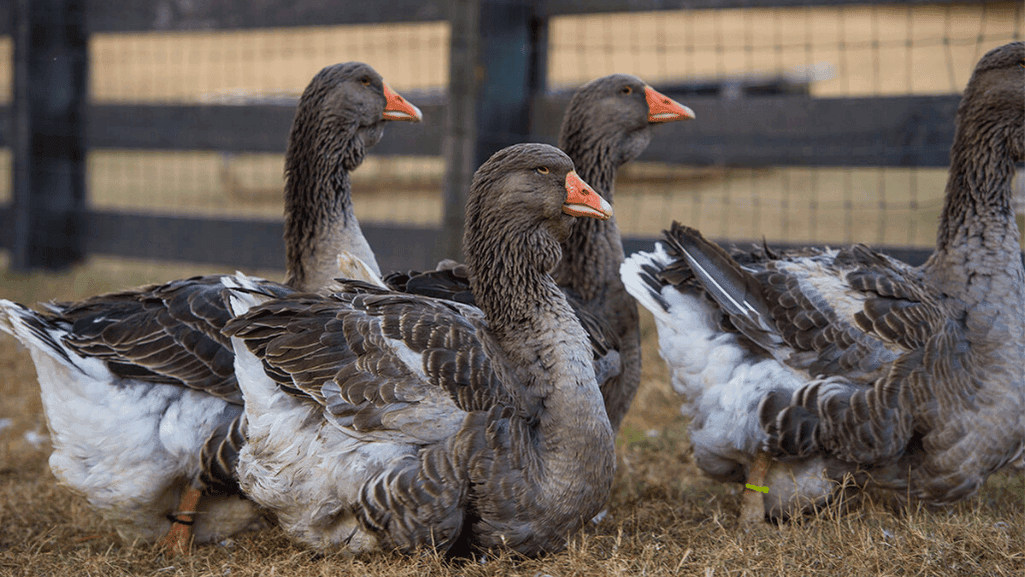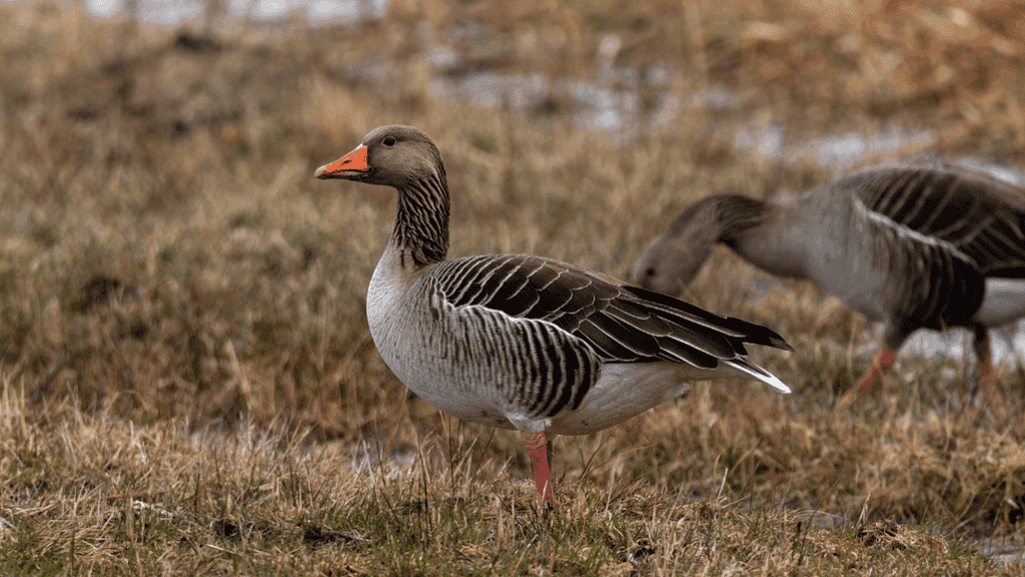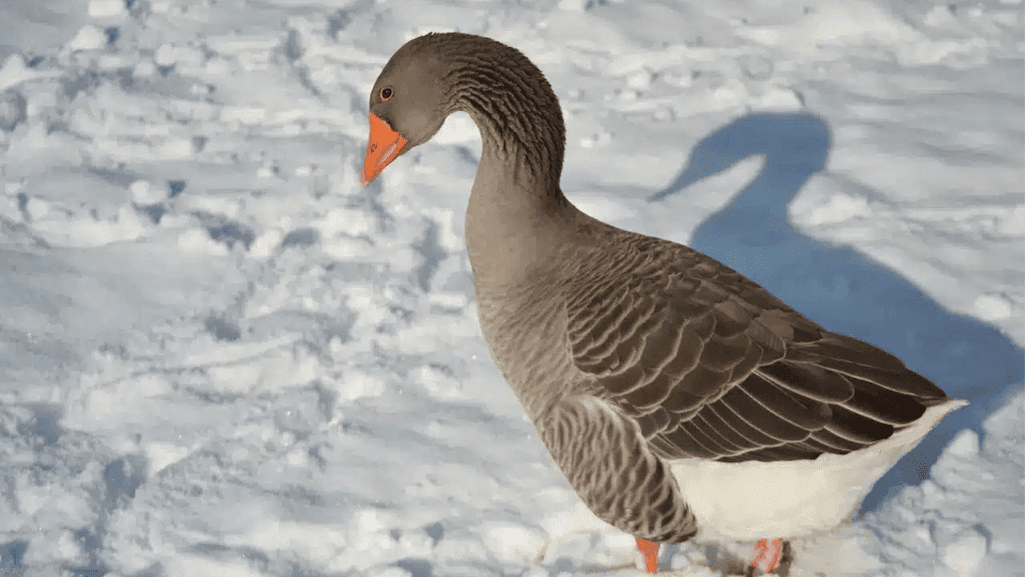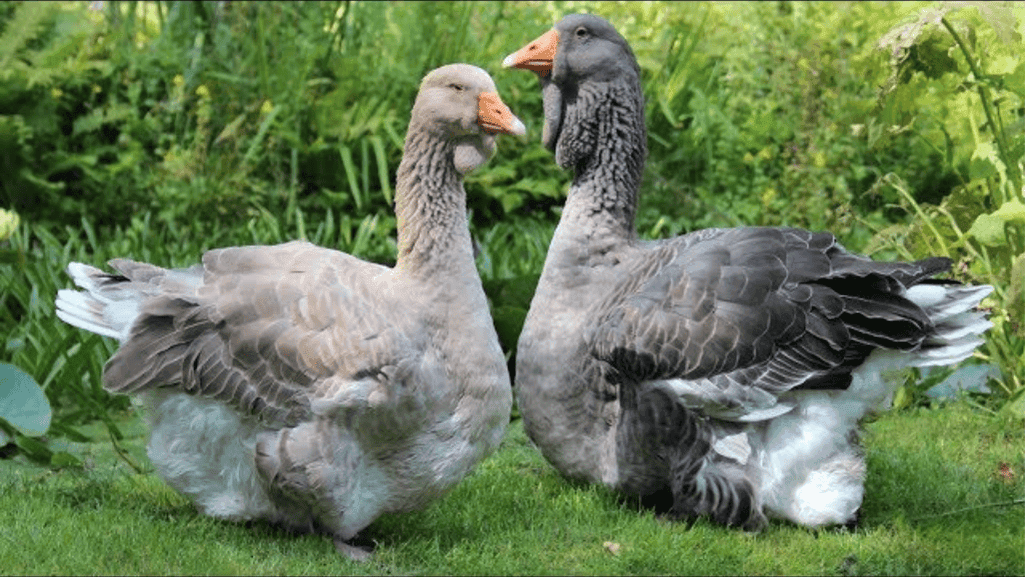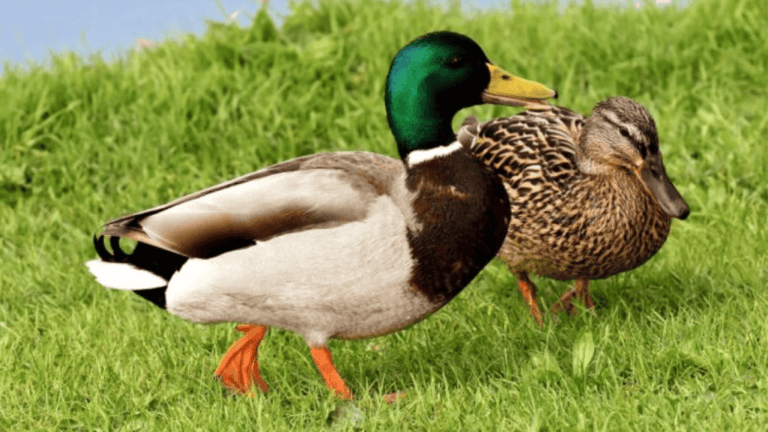The Toulouse goose is a beloved heritage poultry known for its size, gentle nature, and role in agriculture and French cuisine. It comes from the Haute Garonne region in southwestern France, around Toulouse. This majestic bird has a history dating back to the 1400s.
It was brought to England and the United States in the 1800s. The American Poultry Association recognized it in 1874.
The Toulouse goose has two main types: Production and Dewlap. Production Toulouse geese are big, weighing 18-20 lbs, and lay 25-40 eggs a year. Dewlap Toulouse geese are even bigger, weighing 20-26 lbs, with some reaching 30 lbs or more.
Both types are moderate egg-layers, producing 20-35 eggs annually. Some strains lay more eggs.
The American Poultry Association recognizes two colors: Gray and Buff. Toulouse geese weigh 26 lbs for Old Ganders and 20 lbs for Geese. Young Ganders and Geese weigh 20 lbs, and Young Geese weigh 16 lbs. They are in the heavy breed class, like the Embden goose.
The Buff variety was recognized in 1977, developed from pure Toulouse stock.
Key Takeaways
- Toulouse geese are a heritage breed known for their large size, gentle temperament, and contributions to agriculture and French cuisine.
- The breed originated in the Haute Garonne region of France and was imported to England and the US in the 1800s.
- Toulouse geese come in two main types: Production Toulouse and Dewlap Toulouse, with varying weights and egg-laying capabilities.
- The American Poultry Association recognizes two color varieties: Gray and Buff.
- Toulouse geese are docile, good egg-layers, and average foragers, making them suitable for various farm and pet settings.
Introduction to the Toulouse Goose
The Toulouse goose is a heritage breed known for its size and history. It has won the hearts of many in the farming and culinary worlds. These geese are known for their dark feathers and stately look, symbolizing excellence in both fields.
Origin and History of the Toulouse Goose
From southern France, the Toulouse goose has a long history. It comes in two types: the Production type for small farms and the Dewlap type for foie gras. This breed has been bred for various uses over the years.
The Toulouse goose is big, with females weighing 12 to 13 pounds and males up to 20 pounds. They are among the largest goose breeds.
Importance in Agriculture and Culinary Arts
The Toulouse goose is key in agriculture and cooking. They are used in goose farming and are good egg layers. But, their biggest contribution is to the culinary world.
In France, Toulouse geese are used to make foie gras. This dish is loved for its rich flavor and smooth texture. It’s a favorite in fancy restaurants.
Toulouse geese are also great at raising their young. They are popular among hobby farmers and backyard keepers. People love their unique qualities and friendly nature.
Physical Characteristics and Traits
The Toulouse Goose is a majestic heritage breed known for its impressive size and distinctive appearance. These gray geese have a large frame. Ganders weigh between 20-26 lbs, and geese weigh 16-20 lbs. The dewlap variety is the largest, with some adults weighing close to 30 pounds.
One of the most striking features of the Toulouse Goose is its broad, thick neck and heavy, folded dewlap. The body is long, broad, and deep. It has a rounded breast and wide keel, giving the bird an imposing presence. The breed comes in two color varieties: Gray and Buff.
Size and Weight Specifications
The production Toulouse Goose weighs between 18-20 pounds. It lays 25-40 eggs per year. These birds are good foragers and can adapt to both cold winters and hot summers.
The Livestock Conservancy has selected the Toulouse breed as a general-purpose farm bird. This is due to its versatility and hardiness.
“The Toulouse, along with the Embden, holds the largest standard weights of any goose breed.” – American Poultry Association Standard of Perfection, 1998 Edition
Plumage and Color Variations
The Toulouse Goose comes in two recognized color varieties: Gray and Buff. The Gray variety has soft, even gray plumage with white-edged back and flank feathers. This creates a stunning contrast.
The Buff variety, accepted by the American Poultry Association in 1977, displays an even buff color. It has the same feather pattern as the Gray variety. Both varieties have vibrant orange bills, legs, and feet. They also have rich brown eyes, adding to their striking appearance.
Raising and Caring for Toulouse Geese
Toulouse geese are easy to care for and hardy. They do well in many places, making them great for both new and experienced bird keepers. To keep your Toulouse geese happy, give them the right home, food, and health care.
Ideal Habitat Requirements
Toulouse geese need a big, safe shelter to stay away from predators and bad weather. A goose house with good air and comfy bedding is key. They also love a grassy pasture for foraging and natural behavior. A shallow pool or pond for swimming makes their life even better.
Feeding and Nutritional Needs
Good food is vital for Toulouse geese to grow. Dewlap Toulouse geese need lots of balanced feed for the first three months. Calcium supplementation helps their bones grow strong. Later, they can eat a pasture-raised diet with grains and pellets. Always make sure they have clean, fresh water.
“Toulouse geese are slow to mature, taking two or more years to achieve their full body size and head proportions.”
Health Considerations
Toulouse geese are mostly healthy but have some health tips. Their soft feathers mean they can get cold from rain, so keep them dry. Also, don’t keep them with aggressive birds to avoid fights. Regular vet visits, clean living spaces, and the right food keep them healthy.
With the right goose care, including a good shelter, pasture-raised living, and the right food with calcium supplementation, your Toulouse geese will be happy. They’ll add joy to your farm or backyard for many years.
Breeding Toulouse Geese
Breeding Toulouse geese is rewarding for both new and experienced poultry lovers. These birds are known for their size and gentle nature. Choosing the right breeding stock and using proper techniques are key to success.
Selecting Breeding Stock
Choosing the right breeding stock is vital for fertility and egg production. Look for birds that are healthy, have the right size, and are full of energy. Avoid birds with narrow bodies, arched backs, or weak heads. These signs can mean they won’t breed well.
According to breeding guidelines, a Toulouse gander should weigh 9-9.5 kg. Females should weigh 7-8.5 kg. Geese with dewlaps lay 20-35 eggs a year. Those without dewlaps lay 25-40 eggs.
Breeding Techniques and Tips
Toulouse geese lay moderate amounts of eggs. To increase success, follow these tips:
- Pair one gander with one or two geese for the best results.
- Feed them a diet rich in 18-22% crude protein during breeding season. They are not strong foragers.
- Make sure they have enough space to stay fertile.
- Use a broody surrogate or incubator to help with hatching, as they may not hatch as well as other breeds.
Fun fact: The Toulouse goose breed was first exported to England in the 1840s and made its way to America in the early 1850s. They quickly gained popularity in the upper Midwest due to their ability to withstand cold winters.
“Breeding Toulouse geese has been a joy. They are such gentle giants and make wonderful parents. With proper care and attention, you can successfully raise these magnificent birds.”
By choosing the right breeding stock and using proper techniques, you can improve goose reproduction and fertility. Whether for meat, exhibition, or as pets, these birds will bring joy and fulfillment to your life.
Culinary Uses and Gastronomy
The Toulouse region is famous for its rich food culture. It has 19 Michelin-starred chefs who make traditional dishes shine. Cassoulet, a hearty stew, is a big hit, made with pork, leek, partridge, mutton, duck, sausages, beans, and herbs.
Toulouse geese are key in the region’s gastronomy. They’re used to make foie gras, a luxury dish. The goose meat is slow-roasted or confited to be tender and juicy. Roasted goose is a showstopper at holidays, and the goose fat is a treasure in the kitchen.
Popular Dishes Featuring Toulouse Goose
Goose is more than just foie gras in Toulouse. Confit de canard is a favorite here. Toulouse sausage, with its red wine, thyme, garlic, nutmeg, and bacon, adds flavor to cassoulet. Muscovy ducks also add to the region’s food variety.
Preparing and Cooking Techniques
Chefs in Toulouse slow-roast or confit the goose to keep it tender. They collect the goose fat for its rich flavor. Roasting a whole goose right is key for crispy skin and juicy meat.
Experienced chefs in Toulouse have mastered these techniques. They create unforgettable meals that highlight the Toulouse goose’s unique taste.


